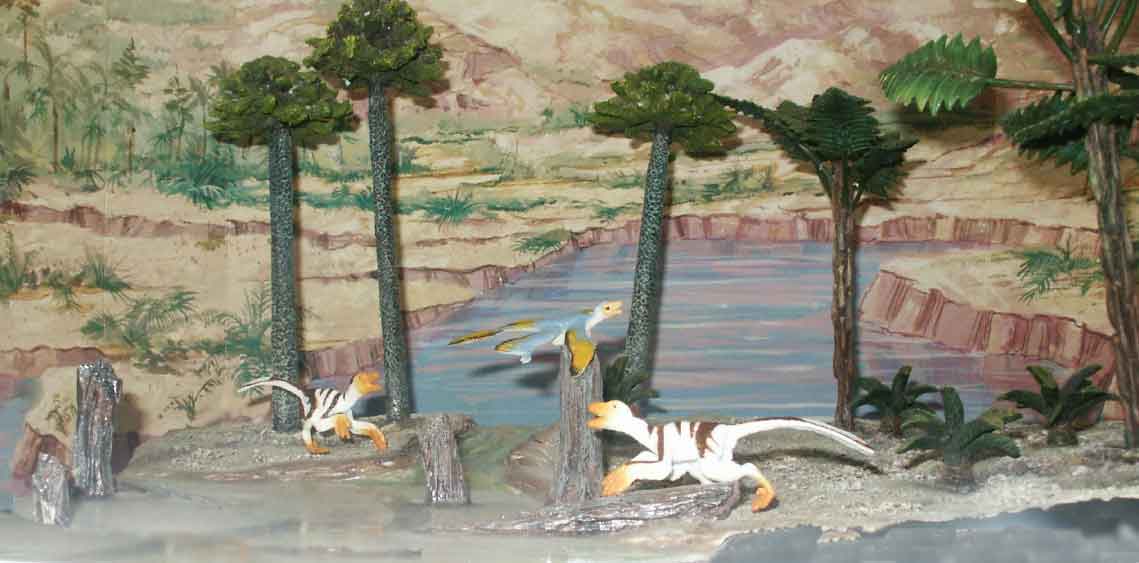Early Cretaceous
Liaoning China
The Early Cretaceous was a mild "Ice House" world. There was snow and ice during the winter seasons, and Cool Temperate forests covered the polar regions. Important Early Cretaceous - Wealden of Europe, Cloverly Formation of Montana, and Africa and South America. The Early Cretaceous stretched from 146 Ma to 100 Ma. In the Berriasian stage flora begins to transition from one dominated by conifers and cycads to angiosperms. Initially flowering plants play minor roles. The continents continue to seperate into north and southern assemblages. Sauropods, stegosaurs and allosaurids that characterized the Late Jurassic are replaced by ornithiscians, anklylosaurs and tyrannosaurs in northern Laurasian continents. Iguanodonts are common and widespread. Brachiosaurs some of them giants are present but uncommon. In the sourthern Gondwanan continents the Jurassic tradition lingers on with titainosaur sauropods, abeilosaurs and alloraurids dominating. Stegosaurs seem to be the big losers along with the diplodocids.
updated 093016

Sinornithosaurus(Chinese bird lizard) is a small dromaeosaurid of about 4 feet. As with other Chinese dinosaurs from the same region, its body was apparently covered with a layer of proto-feathers like the bird Confuciusornis.

At
the end of the Jurassic through the Early Cretaceous the splitting of
the northern continents created rifts valleys. These contained long
lived lake environments had clear water with fine sediments from the
volcanoes that allowed details of the feathers to be preserved. The
lakes supported a flora of conifers, gingkoes, ferns and horsetails.
Besides a bevy of hairy feathered small theropods there is the horse
sized Jinzhousaurus (Jinzhou lizard) a large
iguanodontid with a mixture of primitive and advanced characters, and
in some characters resembles early hadrosaurs. The earliest bona fide
tyrannosaur is Dilong paradoxus. It was discovered in rocks about 128 million years old. Dilong
had features common to many more primitive theropods—the group of
dinosaurs most closely related to birds—such as a hand with three
fingers (most tyrannosaurs’ hands had just two fingers) and a
relatively small body (it was just five feet long). But Dilong
also had skeletal features, skull openings, and teeth that were
characteristic of tyrannosaurs. In particular, the teeth at the front
of its snout had D-shaped cross-sections.
The pterosaur Guidraco
was a piscivore with an arrangement of teeth that are both elongated
and angled to point forwards rather than just up and down that creates
a large catch area of needle like teeth that significantly increases
the chance of this pterosaur to catch and hold onto slippery prey like
fish.
